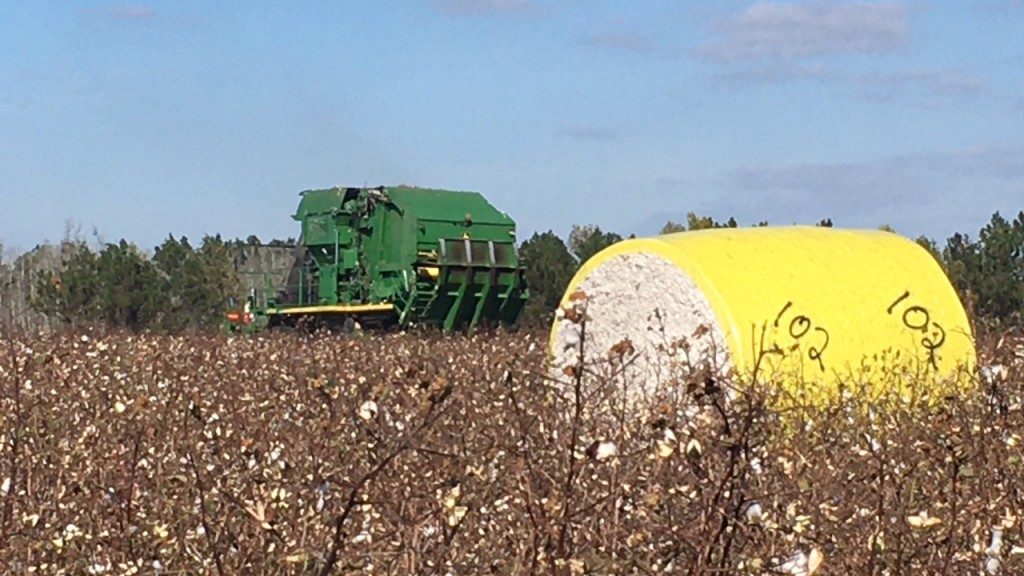Small Grains
-
Below is an update of the current small grain situation in Colquitt County. Wheat: Wheat growers have been asking about how to manage Fursarim Head Blight (FHB). Over the next few weeks growers need to monitor the stage of development of their wheat crop. Late last week, the area wheat crop was ranged Feekes Stage…
Posted in: Uncategorized -
Have a Happy and Safe Thanksgiving!! The Colquitt County Extension office will be closing for Thanksgiving tomorrow afternoon, and we will reopen on Monday, December 1, 2025. Harvest is coming to end and the dry weather continues across the state. According to the drought monitor, 100% of Colquitt County is suffering from D3 or extreme…
-
Current Situation: The peanut crop ranges from 60 to 90 days old. There have been a few calls about low levels of spider mites in the community in dryland fields. Caterpillar pressure has been on the low side this year. PGR applications are still going out, and hopefully it will rain in our near future. White…
Posted in: Corn, Cotton, Entolomogy, Irrigation, Peanuts, Plant Pathology, Small Grains, weather, Weed Managment -
Current Situation: This past week has been hot and there have been some hit-or-miss showers across the county. The majority of the corn crop is around or past dent stage. The cotton crop ranges from squaring to the 4th week of bloom. The peanut crop ranges from 30 to 90 days old. Insect pressure has…
-
Scout Schools – Insect scouting schools will be conducted on June 2, 2025 in Tifton and June 10, 2025 in Midville. Crops to be covered include cotton, peanuts, and soybean. These programs offer basic information on insect pest identification and damage, natural enemies, and scouting procedures. The training will serve as an introduction to insect…
-
The topic this past weekend has been how dry it getting. Pam Knox says the weather pattern that we are currently in has a big high pressure center over the southern part of the region. This is preventing any development of rain in most of the region except northern Alabama and North Carolina and Virginia.…
-
This past week, corn growers are finishing up planting this year’s crop. Cotton and peanut growers are preparing to begin this planting season. Growers are burning down fields and finishing deep turning peanut ground. Rain was observed the first part of last week. Fungicide applications were applied to small grains. According to the drought monitor…
Posted in: Corn, Cotton, Entolomogy, Hay & Forages, Peanuts, Pecans, Small Grains, Soybeans, weather -
As corn planting is in full gear, please remember to plant corn 1.5 to 2 inches deep. Growers need to check their planters to avoid too much down pressure. Please make sure the furrow is closed properly. Sometimes we get in a hurry to finish. Please check your speed to ensure that seed spacing is…
-
Current situation: Corn planting is starting around the county. Peanut growers are deep turning in preparation of the new crop. Burndown herbicides are going out on cotton and peanut fields. In a blog post by Pam Knox, earlier this week NOAA released their predictions for what the spring climate will be like. They are calling…
Posted in: Corn, Cotton, Cover Crops, Entolomogy, Hay & Forages, Peanuts, Pecans, Plant Pathology, Small Grains, weather -
The latest drought monitor shows improvement in conditions. The northwest corner of Colquitt County appears to be experiencing some abnormally dry conditions before the weather this past Sunday. The seven-day weather summary is below for the period of March 9-15. Soil temperatures are reaching the mid-60s. Source: Sunbelt Ag Expo location of the UGA Weather…
-
In this issue: What are the current soil temps? Colquitt County Forage Production Update, Corn Burndown, Cotton Acreage Survey, Prowl on forages, Influence of storage length on the nutritive value of baleage, EVALUATING FUNGICIDES FOR MANAGEMENT OF AREOLATE MILDEW IN GEORGIA. What are the current soil temps? Soil temperatures for three depths are listed below…
Posted in: Corn, Cotton, Cover Crops, Hay & Forages, Livestock, Marketing, Meetings, Plant Pathology, Small Grains, weather, Weed Managment
